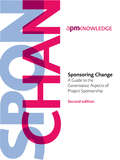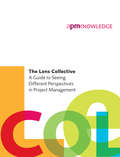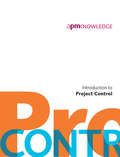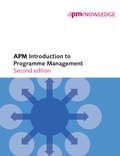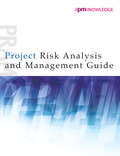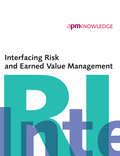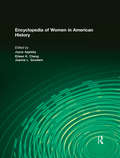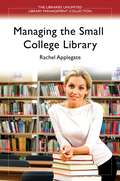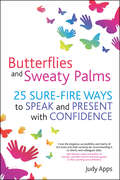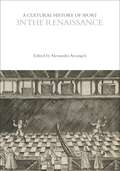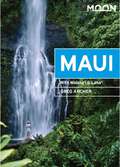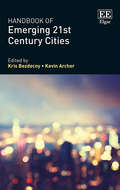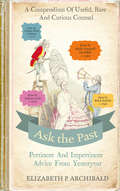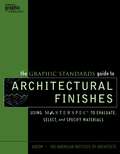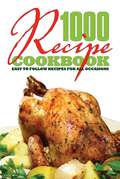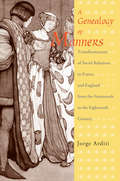- Table View
- List View
Sponsoring Change,: A Guide to the Governance Aspects of Project Sponsorship (2nd edition)
by APM Governance Specific Interest GroupSponsoring Change 2nd edition provides essential guidance to sponsors of projects, helping users to deliver project outcomes more successfully. Designed to be easily accessible to senior figures in a project-based organisation, Sponsoring Change explains: why every project needs a sponsor; how the board’s support is important for sponsor and project success; the attributes of an effective sponsor that are critical to success; what a sponsor does for the business; what a sponsor does for a project manager; some useful pointers in choosing and selecting a suitable sponsor. Originally released in 2009, the latest edition of Sponsoring Change has been fully updated to reflect the growing importance of effective sponsorship. As with the two previous successful publications from the same stable, Directing Change and Governance of Co-Owned Projects, it is applicable to all types of organisation across all sectors. Giving his endorsement, Network Rail chief executive Mark Carne said, “We believe its use will improve governance, bringing greater reward to organisations.”
The Lens Collective
by APM People Specific Interest GroupThe term ‘lens’ has been specifically chosen for this guide to reflect the analogy between human vision and the interaction of people. This context also facilitates the analogy between the tools and techniques used to enhance, correct, protect and improve this interaction. This guide, written by the APM People Specific Interest Group, is intended to help individuals reflect upon their capabilities, increase their awareness of others and successfully apply new perspectives to their projects. Readers of this publication may also be interested in APM Body of Knowledge, 6th edition.
Introduction to Project Control
by APM Planning Specific Interest GroupThere is a narrow view of control which is about delivering projects in accordance with their plans, using disciplines like earned value and risk management already championed by APM. Introduction to Project Control, written by the APM Planning Specific Interest Group, offers a wider perspective, which includes doing the right projects. It involves integrating all the disciplines of project management and brings together material from the APM Body of Knowledge and other APM publications. Readers of this publication may also be interested in Planning, Scheduling, Monitoring and Control, Introduction to Project Planning and Project Risk Analysis and Management Guide.
APM Introduction to Programme Management (2nd edition)
by APM Programme Management Specific Interest Group“This update to APM Introduction to Programme Management brings new insights as to what programme management is all about. It is an ‘easy read’ for the top executives, for those relatively new to programme management who have a thirst for knowledge and for the project management community who should, and need to, understand how their project management skills play into the ‘bigger picture’.” Sir John Armitt More than a decade after its release, this substantial refresh of APM Introduction to Programme Management brings practitioners up-to-date with the latest developments in the discipline. As well as the fundamental principles – what a programme is, how it works and how to review progress - the guide also explores the changing environment in which programmes exist, their relationship to the strategic context of organisations as well as ‘new’ frameworks and ways of working. APM Introduction to Programme Management 2nd edition is one of APM’s core introductory texts. Written by experienced practitioners from APM’s Programme Management Specific Interest Group (SIG), it is recommended reading for anyone joining a programme team – or those who want to know how to interact with the programme. Readers of this publication may also be interested in Directing Agile Change. Book Review: “A COMPREHENSIVE INTRODUCTION” This is the second edition of APM Introduction to Programme Management, first published nearly a decade ago. It is an easy read for executives, those relatively new to programme management, and those in the community who should and need to know how project management skills are one aspect of the bigger picture. The book is concise, arranged over three sections and totalling 55 pages. It demonstrates links to other APM Book of Knowledge chapters, and there is a full glossary of terms. The book does not focus on the ‘technical’ aspects of programmes, nor is it aimed at one specific industry. Rather, it iterates that programme management is not simply another level of project management, and explores the organisational and strategic contexts in which programmes exist. Complex discussions are supported by clear and easy-to-understand illustrations. Although the book is based on the before, during and after stages of a programme life cycle, the topics discussed in the three sections are not easily linked to the life cycle. For example, information and benefits management is not discussed until the final pages of the book, whereas, in reality, these are key considerations in the formation of a programme. This is a comprehensive introduction and offers helpful references for those keen to explore particular subject areas. APM Introduction to Programme Management does exactly what the title suggests. Reviewed by Tom Worsnop
Project Risk Analysis and Management Guide
by APM Risk Management Specific Interest GroupRisk is present in all project work, whatever the nature of the project, or the environment in which it is undertaken. The Project Risk Analysis and Management (PRAM) Guide 2nd edition, written by the APM Risk Management Specific Interest Group focuses on the risk issues that affect the project manager. It addresses how the risk management process at project level connects to corporate or programme level risk management. This guide offers the latest practices, opportunities, governance, benefits and behavioural issues. Readers of this publication may also be interested in Interfacing Risk and Earned Value Management and Prioritisng Project Risks.
Interfacing Risk and Earned Value Management
by APM Risk Specific Interest Group the APM Earned Value Specific Interest GroupThis guide, written by the APM Risk Specific Interest Group and the APM Earned Value Specific Interest Group, examines in detail the interfaces between two key elements of the APM Body of Knowledge. Project management is sometimes compartmentalised into its discrete elements – product decomposition, planning, scheduling, cost estimating, requirements management, risk management and performance techniques such as earned value management. This guide looks at the benefits of looking at project management techniques as a cohesive whole. Readers of this publication may also be interested in Prioritising Project Risks, Project Risk Analysis and Management Guide 2nd edition, The Earned Value Management Compass and Earned Value Management: APM Guidelines, 2nd edition.
Handbook of Research on Techno-Entrepreneurship, Third Edition: Ecosystems, Innovation and Development (Research Handbooks in Business and Management series)
by Francesco P. Appio François Thérin Hyungseok YoonWhile knowledge-intensive environments encourage and foster new ideas for products, services, production methods and business models, they also entail high levels of risk derived from the fast and dynamically changing nature of technology. This Handbook explores the new theoretical frameworks that are needed to cope with the growing relevance of techno-entrepreneurship initiatives globally. Demonstrating that techno-entrepreneurship and its ecosystems create opportunities across national borders, this Handbook also shows how they proactively shape their business environment and engage in more complex collaborative networks. Chapters cover emerging areas in the field, such as frugal innovation, the drone industry and gender-specific entrepreneurship. Separated into sections dedicated to entrepreneurial ecosystems – with original research into incubators, accelerators and crowd funding – and techno-entrepreneurship across countries, the contributors examine specific issues that arise in context. With international scope, this Handbook will be an essential read for entrepreneurship and innovation scholars. Any researcher with an interest in entrepreneurial ecosystems will also benefit from the original research presented.
Encyclopedia of Women in American History
by Joyce Appleby Eileen Chang Neva GoodwinThis illustrated encyclopedia examines the unique influence and contributions of women in every era of American history, from the colonial period to the present. It not only covers the issues that have had an impact on women, but also traces the influence of women's achievements on society as a whole. Divided into three chronologically arranged volumes, the set includes historical surveys and thematic essays on central issues and political changes affecting women's lives during each period. These are followed by A-Z entries on significant events and social movements, laws, court cases and more, as well as profiles of notable American women from all walks of life and all fields of endeavor. Primary sources and original documents are included throughout.
Encyclopedia of Women in American History
by Joyce Appleby Eileen Chang Neva GoodwinThis illustrated encyclopedia examines the unique influence and contributions of women in every era of American history, from the colonial period to the present. It not only covers the issues that have had an impact on women, but also traces the influence of women's achievements on society as a whole. Divided into three chronologically arranged volumes, the set includes historical surveys and thematic essays on central issues and political changes affecting women's lives during each period. These are followed by A-Z entries on significant events and social movements, laws, court cases and more, as well as profiles of notable American women from all walks of life and all fields of endeavor. Primary sources and original documents are included throughout.
Managing the Small College Library (Libraries Unlimited Library Management Collection)
by Rachel ApplegateThis book helps directors of small college libraries to plan, staff, and organize their facilities and make the right decisions to effectively contribute to their college's mission.The purpose of this book is to provide the director of a small college library—typically defined as a facility managed by one to seven librarians—with information on every important managerial function specific to their facilities. This content will be much more useful for these library specialists than that of management books covering generic library management or targeted towards large academic settings. Managing the Small College Library covers the key responsibilities of the small college library director: personnel, planning, budgeting, and serving key constituencies. The author draws upon her in-depth knowledge of bureaucratic, political, and human resources managerial theory to explain how librarians can advance the mission of their library. It also includes an in-depth discussion of tenure and academic status for librarians, and examines the effects of both public and religious affiliation.
Butterflies and Sweaty Palms: 25 sure-fire ways to speak and present with confidence
by Judy AppsIf you have ever carried a lucky talisman in your pocket to give yourself courage before a big event then carry this book instead. Based on Neuro-Linguistic Programming (NLP), the ground-breaking solutions to performance anxiety in this book will carry you through the most daunting experience of public speaking.The exercises are simple and highly effective. Even if you have suffered intolerably from performance nerves in the past this book will enable you to perform with passion and determination and wow your audience. How many times have you picked up a self-help book and thought "It's all very well but it won't work for me." This time the book meets you where you are and helps you to succeed by approaching the problem on many different levels.Judy inspires and encourages you with her descriptions and anecdotes. There are exercises that you can easily do at home and which are interesting and fun to do. The exercises are diverse so that issues are tackled in a variety of different ways. You can do the exercises either alone or with other people. The book is brief and easy to read, the techniques highly practical and the methods simple yet profound.
Lessons in Lingerie: Finding Your Perfect Shade of Seduction
by Rebecca ApsanIt’s the essential guide to dressing to undress, from the basics of bras, panties, slips, and shapewear to the sexy extremes of corsets, sheer chemises, balconets, and bustiers—perfect for the tens of millions of fans of Fifty Shades of Grey who are now wondering what to wear. Written by lingerie expert Rebecca Apsan (“the best bra-fitter in the country”—New York magazine), Lessons in Lingerie covers it all: The revelation of a properly fitted bra. How to cultivate your inner coquette. How to look ten pounds thinner. What works under a clingy dress or a sheer white blouse. The basics of shopping, cleaning, organizing. And Ms. Apsan’s manifesto for change: Stop wearing underwear!
The Event of Style in Literature
by M. AquilinaThe Event of Style in Literature brings discussions about the question of style up-to-date by schematising the principal issues relating to the topic through a critical overview of the canon of style studies. It reads the work of Jacques Derrida, Maurice Blanchot, and Hans-Georg Gadamer as groundbreaking and 'eventful' interventions.
Problems of Normativity, Rules and Rule-Following (Law and Philosophy Library #111)
by Michał Araszkiewicz Paweł Banaś Tomasz Gizbert-Studnicki Krzysztof PłeszkaThis book focuses on the problems of rules, rule-following and normativity as discussed within the areas of analytic philosophy, linguistics, logic and legal theory. Divided into four parts, the volume covers topics in general analytic philosophy, analytic legal theory, legal interpretation and argumentation, logic as well as AI& Law area of research. It discusses, inter alia, “Kripkenstein’s” sceptical argument against rule-following and normativity of meaning, the role of neuroscience in explaining the phenomenon of normativity, conventionalism in philosophy of law, normativity of rules of interpretation, some formal approaches towards rules and normativity as well as the problem of defeasibility of rules. The aim of the book is to provide an interdisciplinary approach to an inquiry into the questions concerning rules, rule-following and normativity.
Logic in the Theory and Practice of Lawmaking (Legisprudence Library #2)
by Michał Araszkiewicz Krzysztof PłeszkaThis book presents the current state of the art regarding the application of logical tools to the problems of theory and practice of lawmaking. It shows how contemporary logic may be useful in the analysis of legislation, legislative drafting and legal reasoning concerning different contexts of law making.Elaborations of the process of law making have variously emphasised its political, social or economic aspects. Yet despite strong interest in logical analyses of law, questions remains about the role of logical tools in law making. This volume attempts to bridge that gap, or at least to narrow it, drawing together some important research problems—and some possible solutions—as seen through the work of leading contemporary academics.The volume encompasses 20 chapters written by authors from 16 countries and it presents diversified views on the understanding of logic (from strict mathematical approaches to the informal, argumentative ones) and differentiated choices concerning the aspects of law making taken into account. The book presents a broad set of perspectives, insights and results into the emerging field of research devoted to the logical analysis of the area of creation of law.How does logic inform lawmaking?Are legal systems consistent and complete?How can legal rules be represented by means of formal calculi and visualization techniques?Does the structure of statutes or of legal systems resemble the structure of deductive systems?What are the logical relations between the basic concepts of jurisprudence that constitute the system of law?How are theories of legal interpretation relevant to the process of legislation?How might the statutory text be analysed by means of contemporary computer programs?These and other questions, ranging from the theoretical to the immediately practical, are addressed in this definitive collection.
A Cultural History of Sport in the Renaissance (The Cultural Histories Series)
by Alessandro ArcangeliA Cultural History of Sport in the Renaissance covers the period 1450 to 1650. Outwardly, Renaissance sports resembled their medieval forebears, but the incorporation of athletics into the educational curriculum signalled a change. As part of the scientific revolution, sport now became the object of intellectual analysis. Numerous books were written on the medical benefits of sport and on the best way to joust, fence, train horses and ride, play ball games, swim, practice archery, wrestle, or become an acrobat. Sport became the visible sign of the mind's control over the physical body, such control often becoming an end in itself with some sports shaped more by decorum than exercise. The 6 volume set of the Cultural History of Sport presents the first comprehensive history from classical antiquity to today, covering all forms and aspects of sport and its ever-changing social, cultural, political, and economic context and impact. The themes covered in each volume are the purpose of sport; sporting time and sporting space; products, training and technology; rules and order; conflict and accommodation; inclusion, exclusion and segregation; minds, bodies and identities; representation. Alessandro Arcangeli is Associate Professor at the University of Verona, Italy. Volume 3 in the Cultural History of Sport set General Editors: Wray Vamplew, Mark Dyreson, and John McClelland
Moon Maui: With Molokai & Lanai (Travel Guide)
by Greg ArcherEndless stretches of golden sand, legendary surf, and epic outdoor experiences: Discover the true spirit of aloha with Moon Maui. Inside you'll find:Flexible itineraries, from your best day in each region to a ten-day Maui adventure, with coverage of neighboring islands Moloka'i and Lana'iStrategic advice for backpackers, beach-lovers, adventurers, honeymooners, families, wellness-seekers, and moreOutdoor adventures like kayaking, hiking, and scuba-diving, plus the best beaches for swimming, surfing, and snorkelingTop activities and unique experiences: Drive the famous 30-mile Road to Hana or bike through misty hidden valleys. Hike through thick bamboo forests to thundering waterfalls or to the top of a dormant volcano. Snorkel with giant green sea turtles, learn how to catch the perfect wave, or embark on a whale-watching tour. Soak up the electric energy of Front Street in Lahaina, unwind at a luxurious spa, or relax on the sand and watch the sunset with a mai tai in hand The best local flavors: Chow down on fresh fish tacos from a local food truck, savor Polynesian cuisine, and sip coconut porter beer at Hawaii's largest breweryExpert insight from Maui local Greg Archer on how to experience the island like an insider, support local and sustainable businesses, avoid crowds, and respectfully engage with the cultureFull-color photos and detailed maps throughoutBackground information on Maui's landscape, history, and cultural customsHandy tools including a Hawaiian phrasebook, packing suggestions, and travel tips for international visitors, families with kids, seniors and LGBTQ travelersWith Moon's practical tips and local know-how, you can experience the best of Maui.Hitting more Hawaiian Islands? Try Moon Big Island of Hawai'i, Moon Kaua'i, and Moon Honolulu & O'ahu. Visiting all of them? Check out Moon Hawaii.
Moon Maui: With Molokai & Lanai (Travel Guide)
by Greg ArcherEndless stretches of golden sand, legendary surf, and epic outdoor experiences: Discover the true spirit of aloha with Moon Maui. Inside you'll find:Flexible itineraries, from your best day in each region to a ten-day Maui adventure, with coverage of neighboring islands Moloka'i and Lana'iStrategic advice for backpackers, beach-lovers, adventurers, honeymooners, families, wellness-seekers, and moreOutdoor adventures like kayaking, hiking, and scuba-diving, plus the best beaches for swimming, surfing, and snorkelingTop activities and unique experiences: Drive the famous 30-mile Road to Hana or bike through misty hidden valleys. Hike through thick bamboo forests to thundering waterfalls or to the top of a dormant volcano. Snorkel with giant green sea turtles, learn how to catch the perfect wave, or embark on a whale-watching tour. Soak up the electric energy of Front Street in Lahaina, unwind at a luxurious spa, or relax on the sand and watch the sunset with a mai tai in hand The best local flavors: Chow down on fresh fish tacos from a local food truck, savor Polynesian cuisine, and sip coconut porter beer at Hawaii's largest breweryExpert insight from Maui local Greg Archer on how to experience the island like an insider, support local and sustainable businesses, avoid crowds, and respectfully engage with the cultureFull-color photos and detailed maps throughoutBackground information on Maui's landscape, history, and cultural customsHandy tools including a Hawaiian phrasebook, packing suggestions, and travel tips for international visitors, families with kids, seniors and LGBTQ travelersWith Moon's practical tips and local know-how, you can experience the best of Maui.Hitting more Hawaiian Islands? Try Moon Big Island of Hawai'i, Moon Kaua'i, and Moon Honolulu & O'ahu. Visiting all of them? Check out Moon Hawaii.
Handbook of Emerging 21st-Century Cities
by Kevin Archer Kris BezdecnyThe majority of the world's population now live in cities, nearly a quarter of which boast populations of one million or more. The rise of globalisation has granted cities unprecedented significance, both politically and economically, leading to benefits and problems at national and international levels. The Handbook of Emerging 21st-Century Cities explores the changes that are occurring in cities, and the impacts that they are having, at the local, national and global scale. Bringing together voices from around the world, this Handbook provides an interdisciplinary view of the changes that are happening in emerging cities, examining a range of topics from both theoretical and empirical perspectives. With chapters covering changes in urban economies, social dynamics, and emerging technology this Handbook radically rethinks the dynamics of cities in the 21st century, including those in the global south. The Handbook of Emerging 21st-Century Cities is an important addition to the literature, and is a useful resource for students of geography, economics, sociology, anthropology and urban planning. Its insights will also be of value for public administrators and urban planners, and anyone else whose work impacts on, or is impacted by, cities.
Ask the Past: Pertinent and Impertinent Advice from Yesteryear
by Elizabeth ArchibaldWant to know how to garden with lobsters? How to sober up? Grow a beard? Or, simply, how to make a perfect cheesy omelette? Look no further than Ask the Past. Chock-full of advice that has (and some that hasn't!) stood the test of time, Ask the Past is the tongue-in-cheek compilation of hilarious and true answers to life's questions, drawn from actual antique sourcebooks by a historian and bibliophile.From medieval headache remedies to Renaissance pick-up lines, Ask the Past brings you advice that will make you laugh out loud and shake your head in amazement. Here are the answers to the questions you’ve always wanted to ask – 'How do I impress my boss?' or 'How do I put out a fire' – and some that you didn’t know you needed to. Brimming with advice both wise and weird, and illustrated throughout with charming images from rare books, Ask the Past offers a surprising vision of the past, together with a hilarious menu of solutions to the knotty problems of the present – like how to kill a snake with a radish!
The Graphic Standards Guide to Architectural Finishes: Using MASTERSPEC to Evaluate, Select, and Specify Materials
by ARCOM The American Institute of ArchitectsFrom ARCOM and The American Institute of Architects A complete visual guide to choosing and using finishmaterials In this unique guide, the authors of MASTERSPEC and ArchitecturalGraphic Standards join forces to offer architects vitalsingle-source access to the unbiased information they need toevaluate, select, and specify the best finish materials for anyjob. This powerful visual resource combines hundreds of illustrationsfrom Architectural Graphic Standards with corresponding buildingmaterial performance and specification information from AIA'sMASTERSPEC, published by ARCOM. Use this book during the schematicand design development phases of a project and as an indispensableaid for product selection and specification. Essential for architects, interior designers, and buildingdesigners, this vital reference provides information to makeinformed decisions about specific design goals, such asaffordability, environmental friendliness, durability, fireresistance, and esthetic success. Features include: * Unique source of independent, in-depth building productperformance information-the one source that gives you reliablebuilding product information before you consult withmanufacturers * Covers a full range of standard finish materials and includesselection criteria, details, typical product sizes, andinstallation and maintenance data * Provides current standards based on research by government,association, and independent testing organizations as well as theinput of experienced architects and specifiers "Architectural Graphic Standards has served the design communityfor decades as a virtual 'bible' for architectural detailing.MASTERSPEC Evaluations have long comprised one of the bestresources available for building product selection andspecification. Consolidating the strong points of both into thisnew desktop reference is an act of sheer brilliance!" -Martin M. Bloomenthal, FAIA, CCS, CSI, Principal, The HillierGroup, Princeton, New Jersey
1000 Recipe Cookbook
by Arcturus PublishingWith 1000 scrumptious and easy-to-follow recipes, this book provides the perfect answer to all those vexed questions about what to cook. No more agonizing over what to put on the table; you will easily be able to find something to tempt the palate and satisfy the appetite of even the fussiest eaters - whatever the occasion.From time-honoured classics to the more unusual, there is plenty of choice here. The selection will appeal to both novice and experienced cooks alike, whether you are looking for ideas for a light, tasty lunch, a quick, hearty supper, a feast fit for family and friends, or something more elaborate for a dinner party.Soups and saladsStarters and canapésFish, meat and poultryVegetarian and vegetable dishes Pasta and rice Desserts and sweet treats Cakes, biscuits and pastriesSauces and condiments
A Genealogy of Manners: Transformations of Social Relations in France and England from the Fourteenth to the Eighteenth Century
by Jorge ArditiRemarkable for its scope and erudition, Jorge Arditi's new study offers a fascinating history of mores from the High Middle Ages to the Enlightenment. Drawing on the pioneering ideas of Norbert Elias, Michel Foucault, and Pierre Bourdieu, Arditi examines the relationship between power and social practices and traces how power changes over time. Analyzing courtesy manuals and etiquette books from the thirteenth to the eighteenth century, Arditi shows how the dominant classes of a society were able to create a system of social relations and put it into operation. The result was an infrastructure in which these classes could successfully exert power. He explores how the ecclesiastical authorities of the Middle Ages, the monarchies from the fifteenth through the seventeenth century, and the aristocracies during the early stages of modernity all forged their own codes of manners within the confines of another, dominant order. Arditi goes on to describe how each of these different groups, through the sustained deployment of their own forms of relating with one another, gradually moved into a position of dominance.
Work–Life Balance (Health and Medical Issues Today)
by Janice ArenofskyThis powerful resource investigates how a positive work–life balance can help create engaged, productive employees, how imbalances in work–life balance create serious issues for workers, and identifies different ways to greatly improve one's work–life balance.Of the 35 countries in the Organisation for Economic Co-operation and Development (OECD), all except the United States provide nationwide paid maternity leave. This is but one example of how the United States has not made adequate provisions to safeguard the work–life balance of its workforce—to the detriment of the overall economic prosperity of the nation. This insightful book shows how problematic an out-of-balance work-to-life ratio is, gives readers the raw data and information to prioritize their values, and describes tools available for selecting a position that matches an individual's talents and is congruent with her desired work–life balance.Work–Life Balance examines the controversies associated with work–life balance in the modern era and emphasizes how winning the struggle to achieve work–life balance requires buy-in from employees, management, and government. Readers will appreciate how optimizing their work–life balance may incorporate employee assistance programs, flextime, improved time management skills, technology-enabled tools, and community programs. The author explains how choosing an appropriate occupation is the first step toward having a positive work–life balance and avoiding the twin scourges of depression and job dissatisfaction. Comparisons between typical benefits in the United States with those in other countries provide data that can be used to advocate and negotiate for greater flexibility, fairness in gender equality, and better employer-employee relationships.
Work–Life Balance (Health and Medical Issues Today)
by Janice ArenofskyThis powerful resource investigates how a positive work–life balance can help create engaged, productive employees, how imbalances in work–life balance create serious issues for workers, and identifies different ways to greatly improve one's work–life balance.Of the 35 countries in the Organisation for Economic Co-operation and Development (OECD), all except the United States provide nationwide paid maternity leave. This is but one example of how the United States has not made adequate provisions to safeguard the work–life balance of its workforce—to the detriment of the overall economic prosperity of the nation. This insightful book shows how problematic an out-of-balance work-to-life ratio is, gives readers the raw data and information to prioritize their values, and describes tools available for selecting a position that matches an individual's talents and is congruent with her desired work–life balance.Work–Life Balance examines the controversies associated with work–life balance in the modern era and emphasizes how winning the struggle to achieve work–life balance requires buy-in from employees, management, and government. Readers will appreciate how optimizing their work–life balance may incorporate employee assistance programs, flextime, improved time management skills, technology-enabled tools, and community programs. The author explains how choosing an appropriate occupation is the first step toward having a positive work–life balance and avoiding the twin scourges of depression and job dissatisfaction. Comparisons between typical benefits in the United States with those in other countries provide data that can be used to advocate and negotiate for greater flexibility, fairness in gender equality, and better employer-employee relationships.
